
Logan and Albert Conservation Association

An analysis of Council’s nature playground proposal for Murray’s Reserve and the LACA alternative
Introduction
Once believed to be extinct, the only known natural community of the endangered tree Gossia gonoclada left in the world was re-discovered in the late 1980s along the banks of Slacks Creek on Murray’s farm and in what is now Murray’s Reserve. This community numbers around 50 plants, making it one of Australia’s rarest trees. It is listed as ‘endangered’ under the Federal EPBC Act.
Within Murray’s Reserve 75 rainforest flora species including Gossia gonoclada form an important patch of subtropical lowland rainforest partially buffered by other ecosystem types within and beyond the Reserve. Subtropical lowland rainforest only occurs in Australia between Grafton NSW and Maryborough Qld. Because ninety two per cent of it has been cleared since settlement, Sub tropical lowland rainforest is listed as critically endangered under the Federal EPBC Act.
Australia has a very poor record when it comes to protecting our native plants and animals, losing more mammal and plant species over the past 200 years than any other country. The International Union for the Conservation of Nature (IUCN) Red List now puts Australia in the top five nations for extinction of animal and plant species, and the top 10 for the number of species currently in danger of extinction. (1)
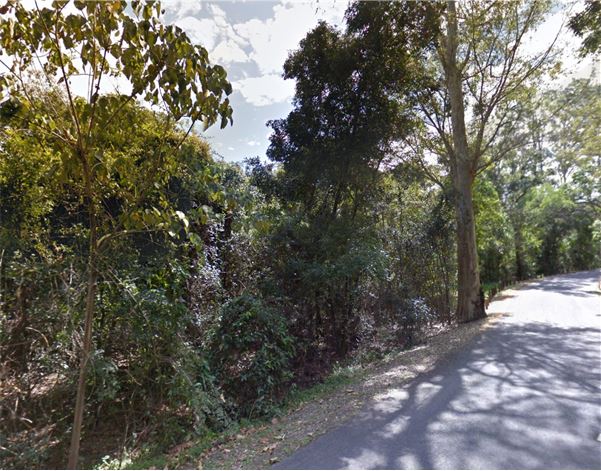
Clearly, Australian governments have failed to provide protection of the habitat of the country’s most endangered species, with 90% of the 120 most endangered animals having few safeguards around loss of their habitats. Recovery plans, with the best intentions, consistently fail in practice to provide genuine measures to limit habitat loss. Indeed it can be argued that, due to the failure to protect habitat in any realistic way, successive governments at all levels are unwittingly helping to entrench the process of extinction across our landscape.
It is with these considerations in mind that LACA believes Council’s ‘nature playground’ proposal for Murray’s Reserve is in need of further consideration with respect to whether, in its current location, it is really compatible with the primary aims of the Reserve, which are to provide adequate protection of the endangered species/plant community on the site.
To help inform this process LACA has prepared the following submission which analyses the Council proposal and puts forward an alternative aimed at strengthening the Murray’s Reserve habitat while still providing for significant community outcomes in this unique part of Logan City.
LACA’s alternative proposal -Complete document
LACA calls for strong climate action from State Government - to end ‘Alice in Blunderland’
 We are celebrating our 25 years of advocacy and activism by calling a public meeting to urge the Newman Government to reverse its ‘Alice in Blunderland’ approach to climate change action and Reef protection.
We are celebrating our 25 years of advocacy and activism by calling a public meeting to urge the Newman Government to reverse its ‘Alice in Blunderland’ approach to climate change action and Reef protection.
LACA climate spokesperson Barry Fitzpatrick said LACA could not support the Government’s recently released draft Long Term Sustainability Plan to save the Great Barrier Reef, describing it as ‘completely useless’ because it lacks any commitment to take strong action to reduce the State’s greenhouse gas emissions.
Read Logan and Albert Conservation LACA submission here.![]() LongTermSustainableReefPlan_LACA_submission_bf.pdf
LongTermSustainableReefPlan_LACA_submission_bf.pdf
‘It is really disappointing that, after a quarter of a century of campaigning , LACA still finds itself battling the same old political games around critically important environment issues like this.’
Members of the public are specially invited and welcome to attend our meeting which will be held at Kimberley College, Carbrook on Saturday 15 November, starting at 2.00 pm. Contact : Barry Fitzpatrick 0427002640
Recently some 30 Logan residents spent a day expanding their knowledge about our wetlands. The day began at 8am with several powerpoint presentations relating to wetland vegetation, water quality, fish habitat and bird habitat, and also included a Berrinba Wetlands Walkabout.

It was offered as part of the Logan and Albert Rivers Catchment Association's, "Wetland Management on Private Property in Logan" Project. The invitation was extended to all who registered interest at one of the display stalls at the Logan Environmental Action Festivals (LEAF).
A bus tour was included and we visited several public wetlands within Logan City Council, including:
Eagleby Wetlands
JJ Smith Recreation Corridor
Springfield Mountain Wetlands.
Next will be a site visit to a private property to showcase a property which has had no revegetation effort and is just starting out, so this landholder would like to receive advice for further action which would improve habitat for wildlife.
Last visit will be to a private property to inspect established revegetation efforts and offer advice for further action which would improve habitat for wildlife.
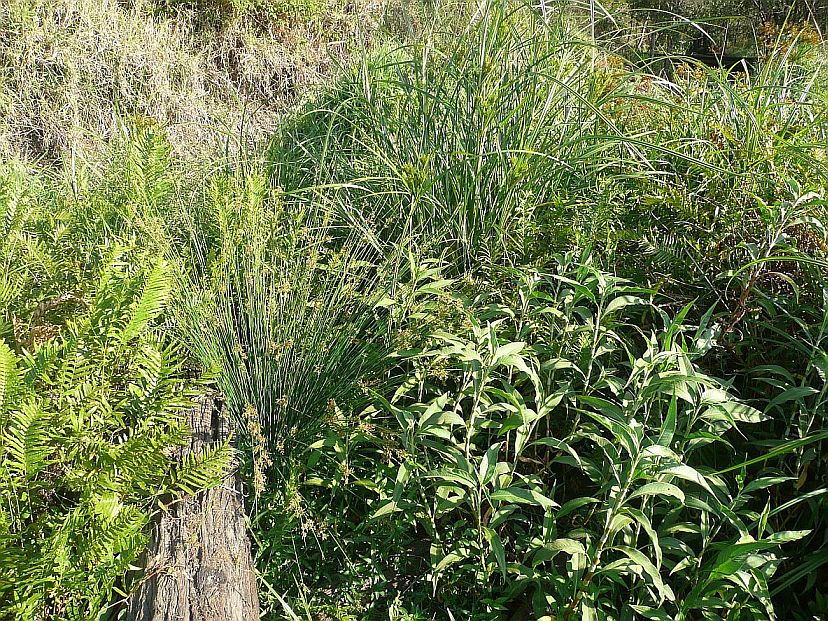

Image and diagram aside are provided by Barry. Detailed information about plants is available in our essential plant reference tool Mangroves to Mountains with local botanist Glenn Leiper being a contributing author.
Suggested planting guide includes plants generally occurring across Logan - Albert Catchment. Selection is influenced by on soil types, steepness of slope down to water, general typography, climate etc.
Article to be completed
The Coalition has made a pre-election commitment to 'fast track' pending international free trade deals by doing what the current Labor Government has stubbornly refused to do: accept dangerous legal provisions which will allow transnational corporations to sue Australia in off-shore tribunals - away from our own legal system - if our environmental and other public interest regulations get in the way of their profits.
If the Coalition is elected and pushes ahead with this commitment, we will almost certainly see the death of environmental campaigning as we know it in this country, along with significant weakening of environmental regulation.
The Trans Pacific Partnership Agreement (TPPA) is a huge free trade deal due to be signed off by Australia in October this year, and comes fully armed with corporate powers to sue participating nations in off-shore tribunals, known as Investor-State Dispute Settlement (ISDS) provisions.
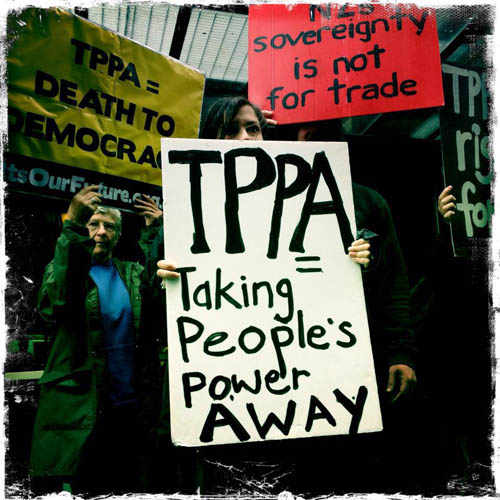 Under earlier free trade deals, including the North American Free Trade Agreement (NAFTA – the model for the TPPA), corporations like Chevron, Exxon Mobil, Dow Chemical, and Cargill had, by 2011, launched 450 investor-state cases in off-shore tribunals against 89 governments to fight environmental laws and regulations, including
Under earlier free trade deals, including the North American Free Trade Agreement (NAFTA – the model for the TPPA), corporations like Chevron, Exxon Mobil, Dow Chemical, and Cargill had, by 2011, launched 450 investor-state cases in off-shore tribunals against 89 governments to fight environmental laws and regulations, including
challenges to bans on toxic chemicals, fracking, timber, mining regulations and programs
supporting green jobs and renewable energy.
Recent examples include the US Lone Star Mining company currently using ISDS provisions in NAFTA to sue the Canadian Quebec provincial government because it has suspended coal seam gas fracking pending a study of its environmental impact, and Peru, which has recently been required to pay Renco the largest ever damages award of USD$ 4.2 billion for banning products that had contaminated the city of La Oroya's environment and poisoned 95% of children there.
There are many, many more examples.
The threats posed by ISDS provisions in free trade agreements clearly impose a 'regulatory chill' effect on nations wanting to avoid the ongoing costs of defending their public interest regulations in off-shore tribunals away from their own jurisdictions.
Couldn't happen here?
The Green Army and other crazy ideas
- first published in EcoNews from SCEC May-June 2013
Recent surveys in Australia and the US have found majority support for action on climate change. Clearly, even in these last bastions of climate denial, there is growing acknowledgement that we are facing a frightening future which will demand the employment of the best contemporary knowledge to come up with the most creative solutions, if we are to maintain our quality of life into the future.
But not the Federal Coalition. It is the conservative way to look back to the golden days of the past (and the Tea Party) for policy inspiration, and when you've backed yourself into a corner on carbon pricing with nowhere else to go, why not cobble up a crazy story and try to make it sound believable?
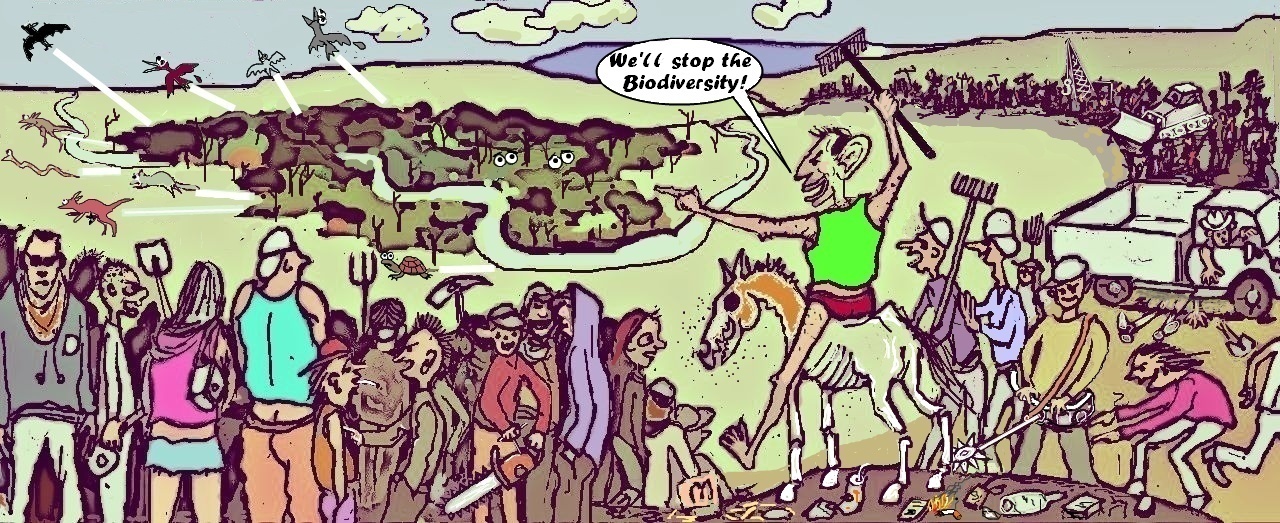
So what better for the Coalition than to reinvent the conservative ideology of 'work for the dole', combine it with Howard's Greencorps, dress it up as carbon reduction, and create a Green Army of 15000 to be recruited from somewhere within the ranks of the unemployed, disenchanted, and confused?
The Green Army is tasked with planting 20 million trees by 2020, and this has become a major plank in the Coalition's 'Direct Action' policy - a title with a swaggering, cut the crap, General McArthurish appeal to those voters who, the Coalition hopes, won't think too much about it. Furthermore, 'Direct Action' echoes notions embodied in the Coalition's 'delivering frontline services' mantra - in this case, doing the carbon abatement 'here, in Australia, where we benefit directly from it'.
All sounding fair enough?
Well, no. The science is becoming far less certain around a second key plank in the Coalition's Direct Action policy - soil carbon's value for carbon sequestration – and economists almost universally condemn a third plank - the competitive grant scheme (effectively a carbon tax in disguise) where the government will buy reverse auction emissions reductions bids from businesses - because it will result in enormous administrative loads and ballooning taxpayer costs.
As a result, the Coalition is finding that its Direct Action solution for carbon reduction is looking shakier than ever (although would-be deputy prime minister Barnaby Joyce still can't see anything wrong with it because it sounds good and... should work anyway, whatever).
To avoid looking too silly the Coalition has quickly advanced the Green Army forward as the flagship solution, particularly for its neat opportunities to create warm fuzzy propaganda about winning community hearts and minds and boot-camping 'lazy' youth, but especially because it will provide endless ministerial photo ops around 'mission accomplished' tree planting events.
If we do try to assume for a moment that the Coalition in Government will be genuine about using the Green Army to help achieve their commitment to a 5% carbon emissions target by 2020, then the deployment of this 'army' will have to be at the very least on the 'shock and awe' scale.
However, military jargon has always specialised in turning gore into glory. This will not be a disciplined army but a loose collection of 'militia', shanghaied for the job of planting 20 million trees by 2020, with a care factor somewhere around zero. And, if the Green Army is genuinely intended to meet its targets, it is the size, scale and speed needed to achieve its objectives that will create ugly problems.
At 15000 strong, the 'Green Army' will be larger than most state police forces, over half the size of the Australian army and similar to the air force and navy, without the supporting infrastructure that these bodies have. It will be composed of young, generally poorly committed novices, learning as they go, conscripted for just six mistake filled months before being replaced by new recruits - their tour of duty terminating just as they might be starting to 'get it'.
And this is one of the core problems. There is nothing wrong with planting lots of trees, but it has to be carried out with science and sympathy because ecosystems are very complex and enormous damage can be done through otherwise well-intentioned restoration schemes.
And the challenge is huge - according to their Direct Action Plan, the Coalition aims to offset 15 million tonnes of emissions by 2020 through tree planting. To achieve this it has been estimated that an area of 25,000 square kilometres will be required, plus about 9,100 GL of water - two and a half times that proposed for the Murray Darling Basin Plan.
So it will not be a trained and disciplined army which will face these impossible challenges, and the collateral damage is likely to be severe. Biodiversity will be the big loser, but also water quality and farming may be impacted, and communities and local councils will be obliged to pick up the pieces. Most pertinently, the objective of sequestering enough carbon to meet the 2020 five per cent carbon reduction target simply cannot be meaningfully assisted by planting 20 million trees in this way, within this time frame.
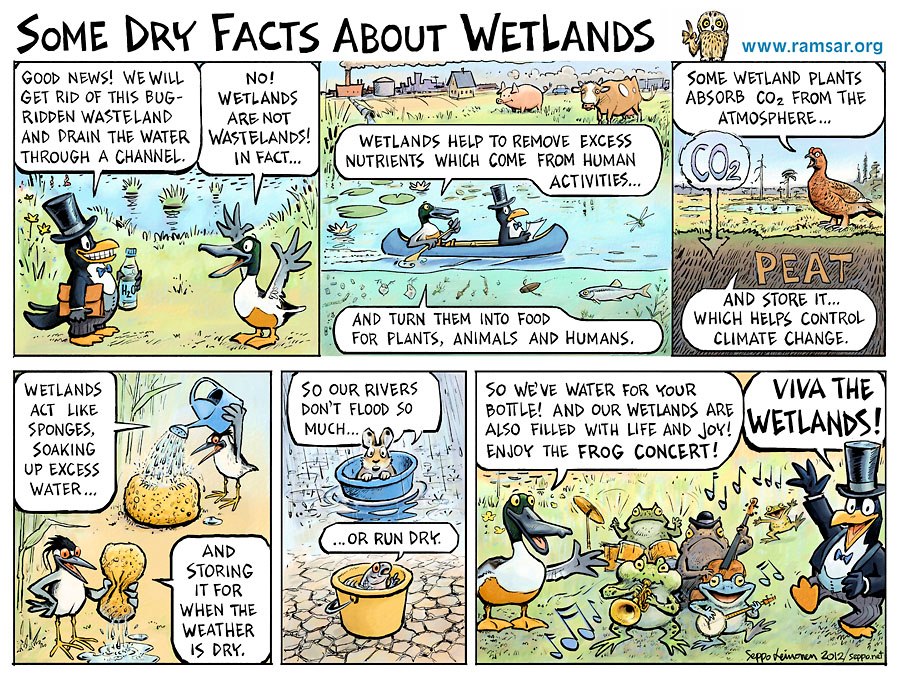 World Wetlands Day 2 February 2013
World Wetlands Day 2 February 2013
Wetlands and Water Management.
Wetlands are not wastelands.
The key objective of World Wetlands Day 2013 is to raise people's awareness of the interdependence between water and wetlands, to highlight ways to ensure the equitable sharing of water between different stakeholder groups and to understand that without wetlands there will be no water.
Cartoon by Seppo - Finnish environmentalist.
The importance of wetlands to the world has been recognized in the international Ramsar Convention signed in 1971. Wetlands include lakes and rivers, swamps and marshes, wet grasslands and peatlands, oases, estuaries, deltas and tidal flats, near-shore marine areas, mangroves and coral reefs, and human-made sites such as fish ponds, rice paddies, reservoirs, and salt pans. There are 163 contracting countries and area governed by wise use protocol is 197,347,539 hectares.
Moreton Bay in SEQ south east Queensland is number 631 joined since 22 October 1993. See complete site list here.
This makes the health of Logan and Albert Rivers doubly significant as they contribute to the health or otherwise of Moreton Bay. Unfortunately the Healthy Waterways Report Card for these waterways is lower than acceptable ie not healthy.
Logan - Albert Waterways Summit hosted by Logan City
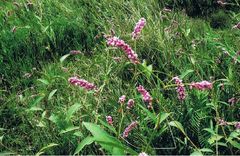 LACAs northern spokesperson Barry Fitzpatrick has been advocating tirelessly that all levels of government and community must take
LACAs northern spokesperson Barry Fitzpatrick has been advocating tirelessly that all levels of government and community must take  some action in response to the failed HEALTHY WATERWAYS REPORTS.
some action in response to the failed HEALTHY WATERWAYS REPORTS.
Saturday 23 July saw the fruitition of successful lobbying when Logan City Council hosted the WATERWAYS SUMMIT at the Logan entertainment. 125 people from a range of backgrounds joined together to take some positive actions to redress the sorry situation. All present committed - pledged - to continue - to rebuild the rivers systems. Local papers across Logan and Scenic Rim have been reporting on this process.
Barry has also been engaged with local community in the Cornubia Wetlands area. This ecologically functioning wetlands is an example of a healthy wetlands sysytem which keeps itself clean. There are no mosquitoes as the micro-organisms in the water are the natural controlling agents. It is only when man steps in and changes a balanced system - using poison for a fast fix or planting with non endemic species that the balanced is tipped.
Barry produces newletters for the local community as part of the successful Logan Envirogrant application. The last newsletter includes information about the Waterways Summit.. It is available to read here. Cornubia_Wetland_News_4web.pdf
Cornubia_Wetland_News_4web.pdf
Plant in image above is the federally listed endangered species Persicaria elatior - one of the many species making up the wetland habitat area. Image of eroded river banks illustrates one of the past mismanagement issues.
Or you can search the archives here